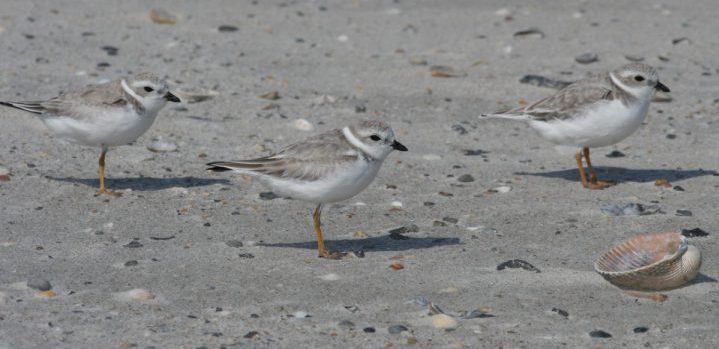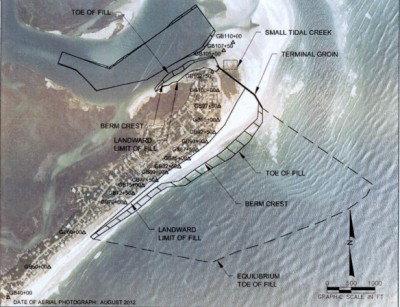
FIGURE EIGHT ISLAND – The U.S. Fish and Wildlife Service is still analyzing the potential effects a proposed terminal groin in Rich Inlet may have on federally listed species.
“We are still trying to make our determination and finish up our analysis,” said Kathy Matthews, a fish and wildlife biologist with the service’s Raleigh field office.
Supporter Spotlight
The service’s initial deadline to submit its biological opinion to the Army Corps of Engineers on the project proposed at Figure Eight Island’s north end was more than six months ago.
A biological opinion is part of a process known as Section 7 of the Endangered Species Act, where federal agencies consult with one another to conserve threatened and endangered species. A formal consultation between Fish and Wildlife officials and the Corps ensues when a determination is made that a federally funded or permitted project is likely to adversely affect a listed species.
Fish and Wildlife Service officials have made a handful of requests to extend their deadline, the original date of which was Aug. 18, 2016, in part, because of new information the service received about piping plovers on Figure Eight’s north end.
That information included additional documented sightings of banded piping plovers, including those within the endangered Great Lakes population. Wildlife biologists track these small shorebirds’ place of birth and migratory patterns by placing small, colored bands on the birds’ legs.
“Some of the extension is due to that,” Matthews said.
Supporter Spotlight
She declined to go into further detail, saying that a decision has yet to be made.
“We have to look at all the species, all the listed entities separately,” she said.
There are three populations of piping plover, including those of the Great Lakes, Atlantic Coast and Northern Great Plains.
The Great Lakes piping plover population was listed as endangered in 1986. That same year, the government listed the Atlantic Coast and Northern Great Plains populations as threatened.
All three populations have been documented at north end of Figure Eight, where acres of barren sand and shoals on the banks of Rich Inlet attract a host of shorebirds. The area is federally designated critical habitat for the Great Lakes and Atlantic Coast piping plover populations.
Anticipating that the inlet will wag southward and erode the north end as has occurred in the past, the island’s homeowners’ associations’ board of directors decided a terminal groin would be the best way to combat erosion.

The board several years ago initiated the process seeking federal and state permits necessary to build a proposed 1,500-foot-long terminal groin.
In order to cover initial construction costs and associated beach nourishment – an estimated $7.4 million – the board planned to assess each property lot owner up to $8,800.
Property owners late last year ultimately voted down the special assessment. A total of 281.5 votes was needed for terminal groin plans to proceed. The board received fewer than 270 votes in favor of the project.
Figure Eight Island Administrator David Kellam said board members are “just looking at all options, and continue to make the best decisions for a long-term management plan.”
When asked if the board was still trying to obtain several property easements needed to proceed with a terminal groin project, Kellam answered, “We’re still looking at all options.”
The association’s board of directors has not withdrawn its terminal groin permit application, according to Mickey Sugg, project manager with the Corps’ Wilmington district.
Prior to the special assessment vote, the board did not have all easements needed from north-end property owners to build the terminal groin.
The terminal groin, a wall-like structure usually made of rock and steel built perpendicular to the shore, would cross upwards of 12 to 15 properties at the north end.
Some owners of those properties have said they would refuse to grant an easement to their land. Since the island is not incorporated the board does not have the authority to take land easements through condemnation.
State law requires that a Coastal Area Management Act, or CAMA, major permit application include a copy of the deed “or other instrument” claiming title to the property.
A CAMA major permit must be approved before the Corps can move forward with a federal permit.








